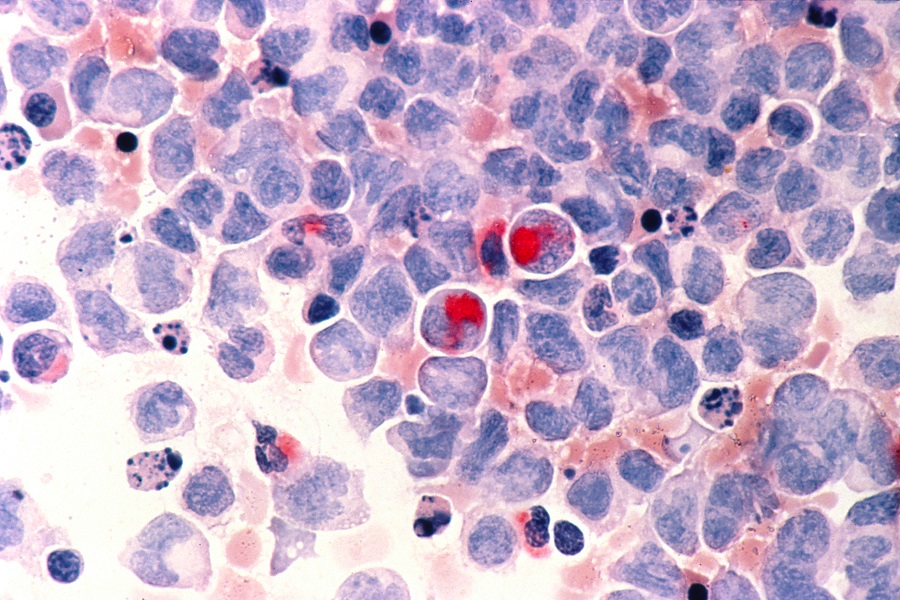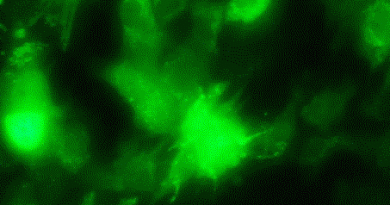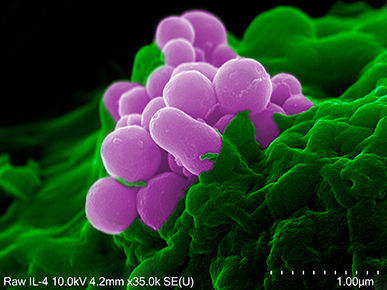Solving the mystery of NPM1 in acute myeloid leukemia
Although it has long been recognized that mutations of gene NPM1 play an important role in acute myeloid leukemia, no one has determined how the normal and the mutated forms of the protein NPM1 function.

“It is one of the biggest enigmas in acute myeloid leukemia,” said Dr. Margaret Goodell, professor in the Center for Stem Cells and Regenerative Medicine and in the Departments of Pediatrics and Molecular and Human Genetics at Baylor, and senior author of the paper. “The most common mutations associated with acute myeloid leukemia occur within the NPM1 gene; however, no mechanism of action has been uncovered to date.”

In her lab at Baylor College of Medicine, Goodell and her team developed new strategies to exploit CRISPR technology to readily target and manipulate solely the mutant form of the protein, also called NPM1c, leaving the rest of the cell intact. This enabled the research team to unlock its function.
The team found that by blocking the export of mutant NPM1 from the nucleus to the cytoplasm using either CRISPR or an available cancer drug that interferes with the exporter, such as XPO1, they were able to inhibit leukemic cell growth. In culture dishes, leukemic cells disappeared, and mice with leukemia treated with the drug lived longer.
“We found that when the NPM1 protein is allowed to leave the nucleus, it activates a set of genes that drive growth of leukemia. If NPM1c can be prevented from entering the cytoplasm, acute myeloid leukemia (AML) cells will differentiate or die and cease to repopulate as cancerous cells,” said Dr. Lorenzo Brunetti, postdoctoral associate in the Goodell Lab at Baylor and co-first author of the paper.
These findings show that acute myeloid leukemia cells expressing the NPM1 mutant gene are highly dependent on continued export of protein NPM1c to proliferate and provide a rationale for the use of nuclear export inhibitor therapeutics in NPM1-mutated AML.
“This research has profound therapeutic implications,” Brunetti said. “There is already a drug available that inhibits the export of multiple proteins, including mutant NPM1, from the nucleus to the cytoplasm. This gives us reasonable evidence that we can treat this type of AML with an existing therapy. We hope this research opens the door for larger conversations and continued research to spur a clinical trial.”

“We were able to answer a burning question in the AML field by exploiting recent technical advances in CRISPR/Cas9 methodologies. Dr. Brunetti and I found this project to be an ideal complement for our respective experiences and interests, and the environment at Baylor allowed us to pursue this project with input and support from faculty across multiple departments,” said Michael Gundry, M.D./Ph.D. student in the Medical Scientist Training Program at Baylor and co-first author of the paper.
Interested in all the details about this study? Read the paper published in the journal Cancer Cell.
For a full list of contributors and their affiliations, visit this link.
This study was funded by the National Institutes of Health, the Cancer Prevention and Research Institute of Texas, the Associazione Italiana per la Ricerca sul Cancro, the European Research Council, the Leukemia and Lymphoma Society, the American Cancer Society, the Claudia Adams Barr Program in Innovative Basic Cancer Research and the Damon Runyon Cancer Research Foundation.



